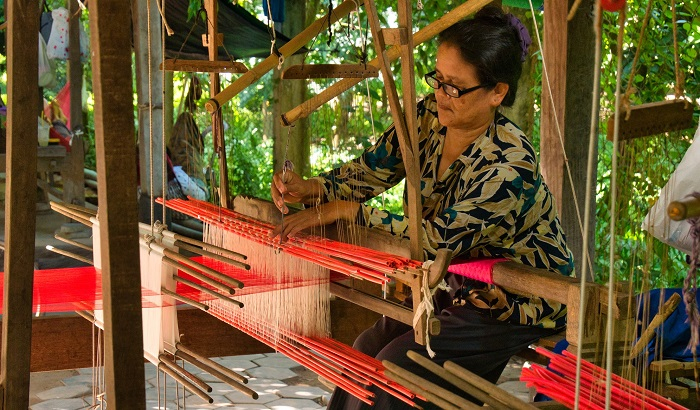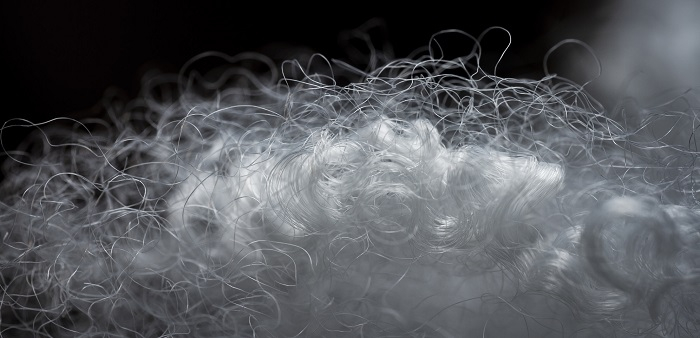

The basic building blocks of all textiles are made of separate, fine, hair-like substances called textile fibres. There are primarily two forms of fibre. The first is constructed of natural fibre, whereas the second is artificial or synthetic fibre. Natural fibres are taken from both plants and animals. Polyester, rayon, and viscose staple fibre are examples of man-made fibre. It is a method of chemically treating and processing wood pulp to create a fibre that is equivalent to natural fibre and has the same properties.
Natural fibres frequently have drawbacks. For instance, cotton clothing takes longer to dry than linen. Another well-known example of a natural fibre with a drawback is wool, which scratches. In order to combat the undesirable and unavoidable characteristics of natural fibres, textile designers of the time chose to use chemistry. Synthetic fibres can be flawlessly combined and are created using a variety of intricate methods. As a result, they don’t often crease, contract, or scrape. The use of blended fabrics with both natural and synthetic fibres is also very common. The advantages of natural materials can be utilised by combining them, while the disadvantages can be balanced.
Natural fibre is any raw material that resembles hair and can be obtained directly from an animal, vegetable, or mineral source. It can be spun into yarns to make woven fabrics or nonwoven materials like felt or paper. A natural fibre can also be described as an accumulation of cells having a small diameter relative to their length. Although there are many fibrous materials in nature, particularly cellulosic ones like cotton, wood, grains, and straw, very few of them can be exploited to make textiles or for other industrial uses. A fibre’s suitability for commercial usage is influenced by a variety of factors, including its length, strength, pliability, elasticity, resistance to abrasion, absorbency, and other surface characteristics.

The majority of textile fibres are thin, flexible, and rather robust. They are elastic in that they can partially or totally recover to their original length after being stretched when stress is released.
artificially created, meaning that its chemical constitution, structure, and properties have been drastically altered. Numerous household and industrial items, such as upholstery, carpeting, and draperies, as well as clothing items like shirts, scarves, and hosiery, as well as industrial elements like tyre cables, flame-resistant linings, and drive belts, are created from spun and woven man-made fibres. The chemical components used to create man-made fibres are classified as polymers, which are distinguished by their lengthy, chain-like molecules and high molecular weight.
Many of the polymers that make up synthetic fibres are the same as or closely related to those found in plastics, rubbers, adhesives, and surface coatings. In fact, a variety of non-fibre products, including cellophane envelope windows and clear plastic soft drink bottles, are made from polymers like regenerated cellulose, polycaprolactam, and polyethylene terephthalate, which have become common household materials under the trade names rayon, nylon, and Dacron (trademark), respectively.

These materials are preferred as fibres because of their strength, hardness, heat and mildew resistance, and capacity to maintain a pressed form.
Unlike synthetic fibres, which are produced, natural fibres are found in fibre form in nature. Natural fibres might be made of cellulose, protein, or minerals. Cotton is made of cellulose because it is a plant-based material. Some synthetic fibres are constructed from cellulose. For instance, the raw cellulose used in rayon is derived from cotton, wood pulp, other grasses, and bamboo. To create the new, artificial fibre, these cellulose-based end fibres were chemically changed from their original condition, in contrast to an entirely natural fibre. Unlike natural fibres, synthetic polymer-based fibres are primarily insoluble and manufactured from chemical polymers that are not found in nature (they do not break down in water). Nylon, acrylic, spandex, and polyester are a few of these.
The given table illustrates the major differences between natural fibre and man-made fibre
| Basis | Natural Fibre | Man Made Fibre |
|---|---|---|
Definition |
The fibre which we get from nature is known as natural fibre. |
The fibre which we made by regeneration system is known as made-made fibre. |
Molecular Weight |
Here, number of molecular weight has no limited. |
Here, number of molecular weight has limited. |
Hygienic |
From natural fibre hygienic fabric is made. |
From made-made fibre hygienic fabric is not made. |
Comfortable |
Natural fibre is comfortable to wear. |
Man-made fibre is uncomfortable to wear. |
Durability |
Natural fibre is less durable. |
Man-made fibre is more durable then natural fibre. |
Spinneret |
In spinning process no need to spinneret. |
In spinning process spinneret is essential. |
Foreign material |
In natural fibre there must consist dart, dust and others impurities. |
This fibre is made by man so there has no natural impurities. |
Making Cost |
Making cost of natural fibre is expensive. |
Making cost of man-made fibre is cheaper. |
Fibre Length |
Fibre length is control by natural. |
Fibre length is control by man. |
Environment Friendly |
Natural fibre is environment friendly. |
Man-made fibre is not environment friendly. |
We can therefore draw the conclusion that natural fibre is derived from nature, hence the name “natural”; in contrast, synthetic fibre is created by humans as an alternative to natural fibre and is produced in a factory using various types of chemicals. Since synthetic fibre is created by humans, it is referred to as “man-made fibre.” Everyone in the vicinity is surrounded by various materials that are designed for various reasons. Clothing comes in a variety of textures; some are glossy on the outside while others are boring on the inside. Fabrics, which in turn are made up of fibres, make up the clothing. The type of fibre has an impact on the fabric and nature of the clothing. However, both natural and synthetic fibres have their own pros and cons, and both are crucial elements in the field of textiles.